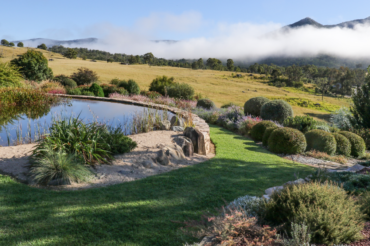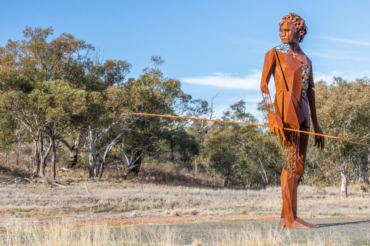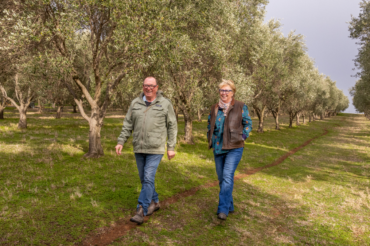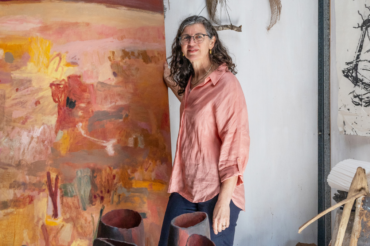
Ruby Henderson-Leconte waves her arm across a map of Australia, taking in the vast swathe of the Northern Territory, South Australia and Western Australia.

The arts administrator explains these are the lands of the Ngaanyatjarra Pitjantjatjara Yankunytjatjara (NPY) Women’s Council, sponsors of one of this country’s most vibrant arts organisations, the Tjanpi Desert Weavers. The NPY lands cover about 350,000 square kilometres of remote desert country of central Australia — an area larger than the state of Victoria — and are home to more than 400 Anangu/Yarnangu women artists who live in 26 isolated communities.

“Tjanpi — the word means ‘grass’ in Pitjantjatjara — started in 1995 in the Papulankutja (Blackstone)community of the Goldfields-Esperance region of Western Australia,” explains Ruby, who joined Tjanpi as a creative development officer after a stint as an arts centre volunteer in WA’s Pilbara. “It’s just exploded from its origins as a basket weaving collective to a thriving contemporary fibre art group that is represented in most major arts institutions in Australia.” Tjanpi weavers use dried native grasses, raffia and wool to create their bowls, baskets and sculptures. Their art has its foundations in the traditional practice of weaving manguri rings, which countrywomen would use to balance coolamons carried on their heads.

By coming together to collect the grass and practise their craft, the artists are able to maintain their culture. “It’s a really positive time for the women to sit together weaving,” Ruby says. “They often hold their workshops in the riverbed away from the community centre. It’s also a good opportunity for some of the older weavers to pass their knowledge onto the younger women in the community.” The Tjanpi organisation employs three field officers, who visit the communities to buy from the artists, supply art materials, hold skill development workshops and facilitate grass collecting.

“Much of the time the field workers travel alone, but they are also sometimes accompanied by allied health people such as nutrition workers and people who can help with other issues in the community,” Ruby says. “The most distant community for Alice Springs is Kaltukatjara (Docker River), which is almost on the WA border and is eight hours’ drive away. The closest would be three hours from Alice.”You don’t have to travel that far to buy a piece of Tjanpi creativity. There’s hardly a public gallery shop or serious arts centre in the country that doesn’t stock Tjanpi work with its distinctive pink swing tags.

Visitors to Alice Springs can go to Tjanpi’s HQ, where there’s a public gallery showcasing baskets, sculptures, jewellery and books. As well as exhibiting in Australia, Tjanpi works have been displayed overseas. Several major works including the Tjanpi Grass Toyota, made by 18 women from Papulankutja, which won the National Aboriginal and Torres Strait Islander Art Award in 2005, and the Seven Sisters, a collaboration with the National Museum of Australia, which tells a dreaming story through a series of larger-than-life-sized sculptures, have become flag bearers for the creative collective.

“Tjanpi weavers are highly skilled creatives,” Ruby says. “Their work is not just a great medium for maintaining culture, it’s also a good source of income and independence for the women. One of our really strong weavers, Cynthia Burke from Warakurna in WA, now works for Tjanpi as an arts and cultural officer and travels widely in her role. So the power of creativity continues to grow and spread.”









